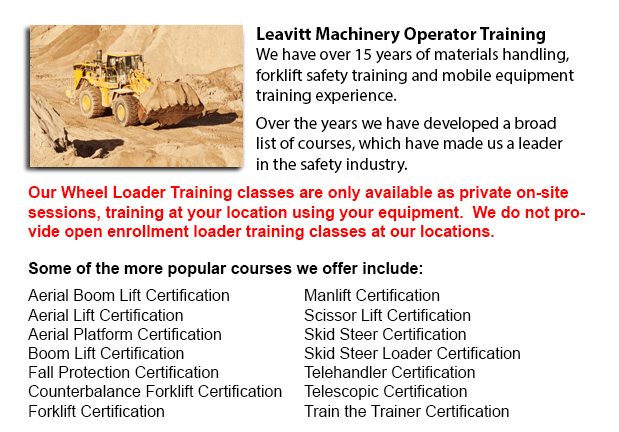
Lift trucks are accessible in a variety of various models that have varying load capacities. Most average lift trucks utilized inside warehouse environment have load capacities of 1-5 tons. Larger scale models are utilized for heavier loads, like for instance loading shipping containers, could have up to fifty tons lift capacity.
The operator could make use of a control in order to raise and lower the blades, which can also be known as "blades or tines". The operator of the lift truck can tilt the mast so as to compensate for a heavy loads tendency to tilt the forks downward. Tilt provides an ability to work on rough ground also. There are yearly contests intended for skilled lift truck operators to contend in timed challenges as well as obstacle courses at local lift truck rodeo events.
General operations
All forklifts are rated for safety. There is a specific load limit and a specific forward center of gravity. This essential info is supplied by the manufacturer and placed on the nameplate. It is vital cargo do not go over these details. It is prohibited in a lot of jurisdictions to tamper with or remove the nameplate without getting consent from the lift truck manufacturer.
Most forklifts have rear-wheel steering to be able to improve maneuverability within tight cornering conditions and confined spaces. This particular type of steering differs from a drivers' initial experience together with various vehicles. Since there is no caster action while steering, it is no required to utilize steering force in order to maintain a constant rate of turn.
One more unique characteristic common with lift truck utilization is instability. A constant change in center of gravity happens between the load and the forklift and they must be considered a unit during utilization. A forklift with a raised load has centrifugal and gravitational forces that could converge to cause a disastrous tipping mishap. To be able to prevent this from happening, a lift truck should never negotiate a turn at speed with its load raised.
Forklifts are carefully made with a load limit utilized for the blades. This limit is lowered with undercutting of the load, that means the load does not butt against the fork "L," and also lessens with fork elevation. Generally, a loading plate to consult for loading reference is positioned on the lift truck. It is dangerous to utilize a lift truck as a personnel hoist without first fitting it with certain safety equipment like for instance a "cage" or "cherry picker."
Forklift utilize in distribution centers and warehouses
Essential for whatever distribution center or warehouse, the forklift must have a safe surroundings in which to accommodate their safe and efficient movement. With Drive-In/Drive-Thru Racking, a lift truck should travel inside a storage bay that is several pallet positions deep to put down or get a pallet. Operators are often guided into the bay through rails on the floor and the pallet is placed on cantilevered arms or rails. These confined manoeuvres require well-trained operators so as to complete the task efficiently and safely. As each pallet requires the truck to go into the storage structure, damage done here is more frequent than with other kinds of storage. If designing a drive-in system, considering the measurements of the tine truck, including overall width and mast width, must be well thought out so as to guarantee all aspects of an effective and safe storage facility.
-
Forklift License Vaughan
Forklift License Vaughan - Getting a forklift certification or forklift license in North America would require the trainee to do hands-on training in addition to classroom instruction. The provincial, federal and state regulatory bodies are responsib... More -
Forklift Ticket Vaughan
Forklift Ticket Vaughan - Forklifts and the pallet jack is meant for just about the same reason. They work to raise and move supplies and goods from one place to another. This however is where the comparison stops though. With the pallet jack, the be... More -
Aerial Lift Certification Vaughan
Aerial Lift Certification Vaughan - Aerial Lift Certification is for individuals who need an in-depth understanding of aerial lift safety. Operators and inspectors, supervisors, maintenance workers and construction craftsmen should perform a certific... More -
Manlift Certification Vaughan
Manlift Certification Vaughan - The Manlifts and Elevated Platforms course provides training on the rules, regulations and proper application of safe operating measures and work practices included in everyday activities for those who work making use... More -
Heavy Equipment Training Vaughan
Heavy Equipment Training Vaughan - The two most common kinds of heavy equipment training are categorized into the categories of machines; equipment that is fashioned with rubber tires or those with tracks. The tracked vehicle are heavy duty machines... More -
Boom Lift Ticket Vaughan
Boom Lift Ticket Vaughan - Boom lifts are equipment that has a platform that may be lowered or raised to different heights, thus making this piece of equipment an important necessity in a wide variety of professions. Offered in many different particu... More -
Telehandler License Vaughan
Telehandler License Vaughan - The telescopic handler or telehandler is a frequently used equipment in industrial and agricultural applications. This particular machine is the same in appearance to a forklift and also functions in a similar way, altho... More -
Scissor Lift Training Vaughan
Scissor Lift Training Vaughan - Scissor lifts have to be operated competently to be able to protect the safety of the machinery and the safety of others within the workplace. Operators who are skilled are trained to drive the particular kind of sciss... More

Forklift Training Vaughan
TOLL FREE: 1-888-254-6157
Vaughan, Ontario
forklifttrainingvaughan.com
Email Us
About Us


